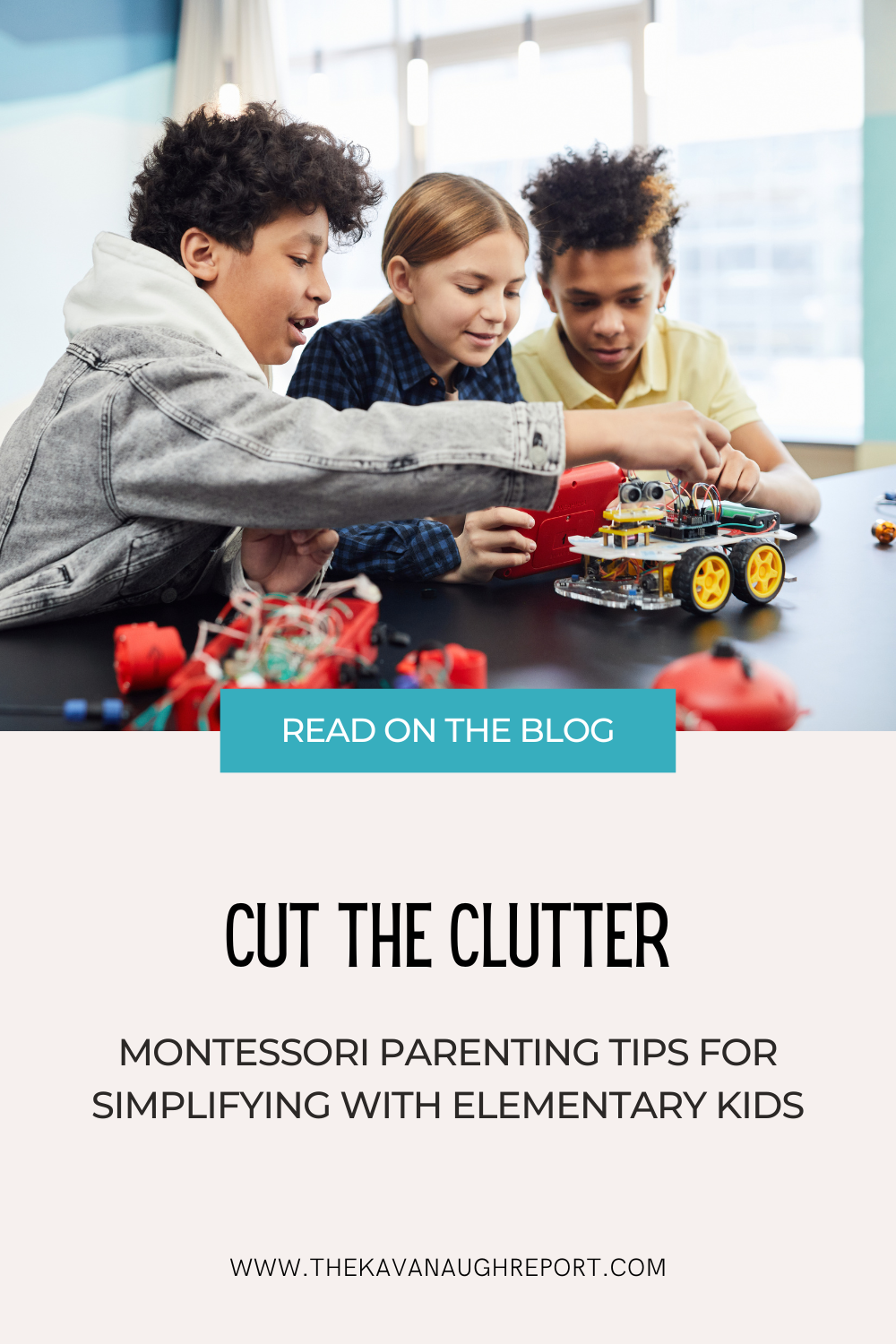For many of us the first few weeks of the year mark a time where we are staring at just far too much stuff. Especially children's stuff. With the holidays newly over, and winter here I feel like my house is bursting with all sorts of toys, games, activities that need to be organized and need a place to go. With my younger kids, a solid toy rotation usually solves the issue. The older things go into storage and some new things are placed neatly on shelves. But, for elementary aged kids, those in the second plane of development, that usually doesn't cut it!
See, I find that by elementary (especially as they move into upper elementary) toy rotations aren't effective anymore. They aren't the solution for keeping the clutter at bay and helping to organize their spaces. Instead, I find working together to purge some of the things in their spaces tends to be a more effective approach to eliminating clutter and excess.
Why Toy Rotations Don't Work for Elementary Aged Kids
I love
toy rotations for younger kids, they work so well in keeping the toys fresh and the environment manageable for young children. But as kids get older they work less well for a few reasons. One, a lot of the clutter with second plane kids isn't even toys. It's art work, big projects, scraps of paper, letters from friends, rocks and who knows what. It's
collections that they love, need, and want. It just isn't things that can be neatly rotated in and out.
And, two, these kids often use their toys/games/materials for a long time. Their interests are deeper than younger kids and their developmental needs change far more slowly. So while small children need new materials to help learn new skills, the toys that second plane children are working on are often open ended or based on interests that can just stick around for a long time. They might not want to give up toys even if they've been out a long time.
Finally, in this non-exhaustive list, is the fact that they just have better memories and are more capable. They know what they have, and they will go get it. They don't care that you put it on the shelf in their closet; "out of sight, out of mind" is not happening here. They will get the things they need whether you've made them accessible or not.
Tips for Cutting Back Clutter with Kids in the Second Plane of Development
So, what do we do about the clutter, how do we purge toys? How can we keep our prepared environments from getting too overwhelming for our elementary kids and ourselves? Here are a few tips that work well in our Montessori family:
Define the Space and the Problem
The most helpful thing, I think, is to really level with your elementary kids. "Hey, this mess is really hard on all of us. The younger kids can't use this space when your things are everywhere. It's too hard for you to keep all of this organized. It's taking too much of my energy to maintain this space for you. I've been noticing that you haven't used XYZ." Whatever it is that is truly the issue with the amount of things that are available. Talk with them in a non-judgmental way and come up with a plan.
Then, define the space that you're working on. It can't be all at once. It helps to tackle this kind of project in small chunks over time and to make sure that you are giving them
space for the bigger projects/work that these kids crave.
Give them Control
Hand over control. You have to be okay with their decisions and accept what they are ready to get rid of or not. Give them limits - it needs to fit in this space or it needs to be something you are using. Resist the urge to do it all for them or without them.
Build the trust that you aren't going to get rid of things that are important to them. What is important to you, might not be the same for them. Be willing to part with things, or pack them away, once your child has made a decision. And similarly, you need to be okay with the things that they still want to keep.
Make it Fun
There's no reason to make this feel like a nagging, boring chore. Turn on some music, time yourself, or see how you can add an element of competition (maybe you both clean out a basket and see who can make it through it first.) Or invite them to help you do one of your adult spaces and then move to the children's. You have to make connection, do it with them and guide them through the process.
After it's done, point out to them how far you have come, and notice how much more functional the space is for them or for your family. Thank them for their hard work.
Remember throughout this process that creating a prepared environment is less about minimizing for minimizing's sake, and more about creating an intentional space that works for you and your children. Be clear about those intentions as your older children move away from toy rotations in the elementary years. And, make this process a habit that you revisit throughout the year.




